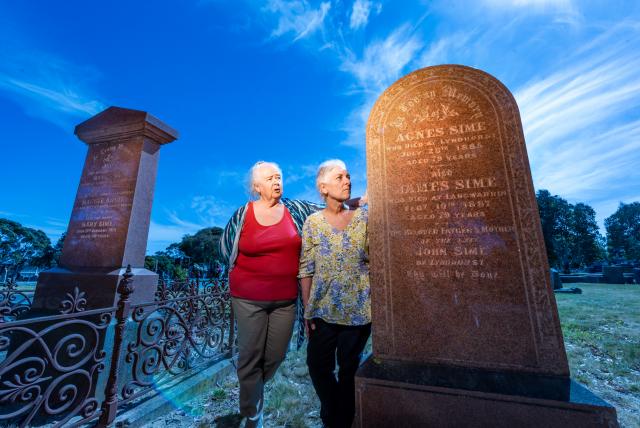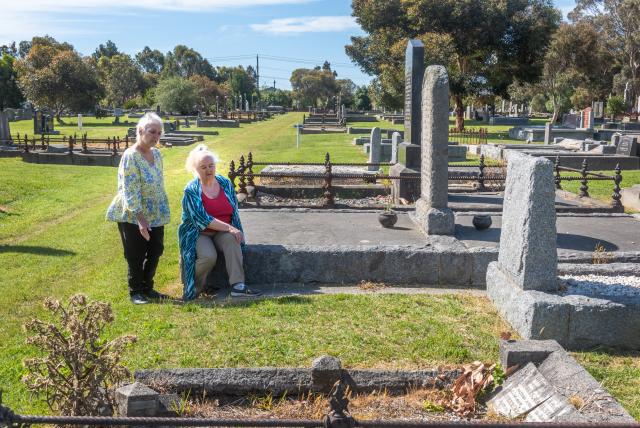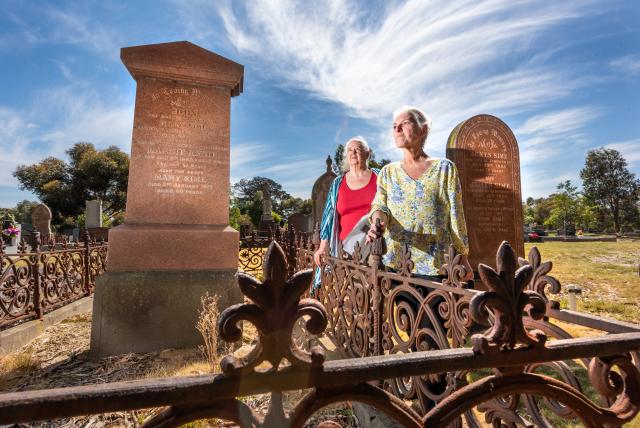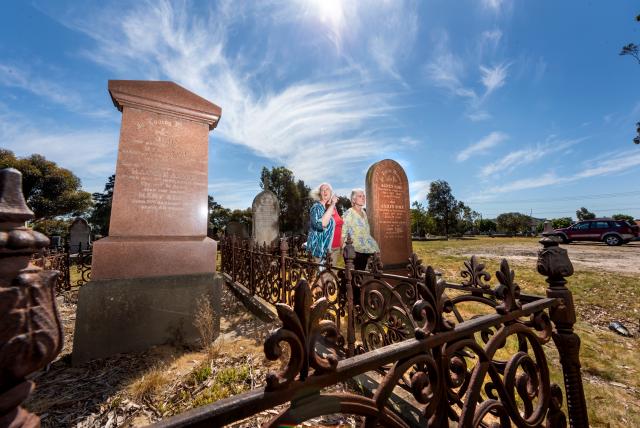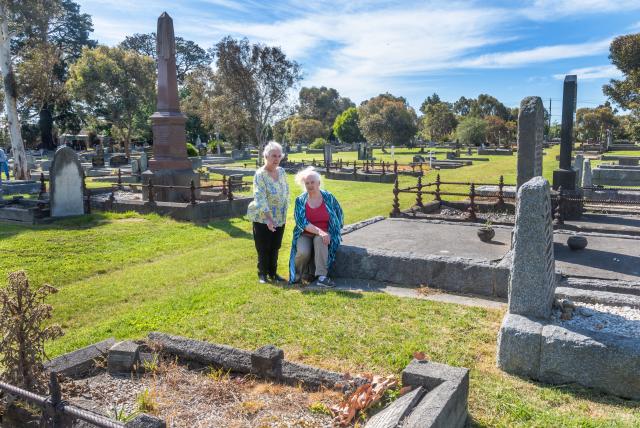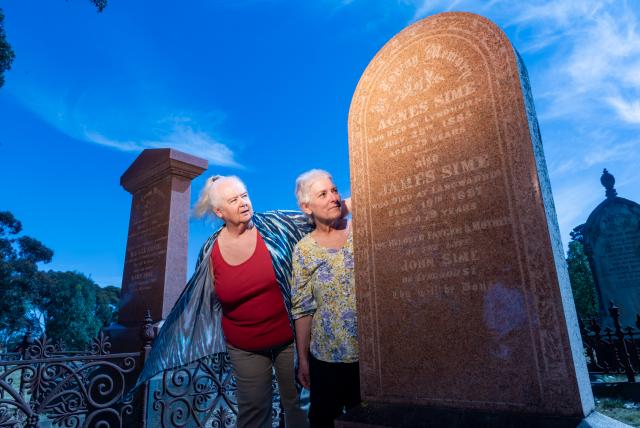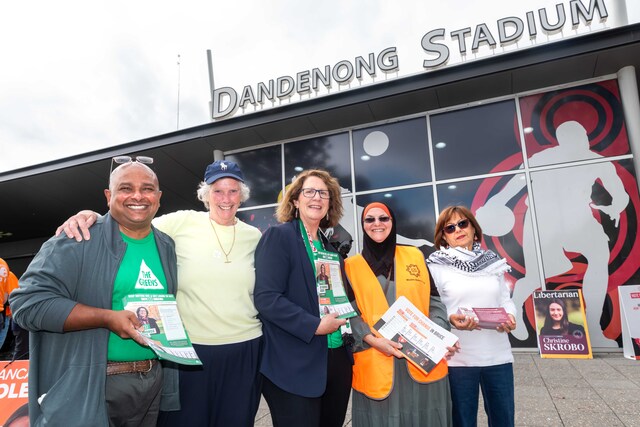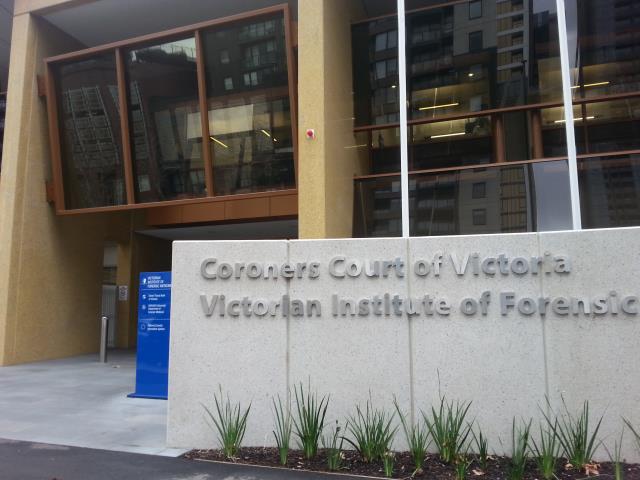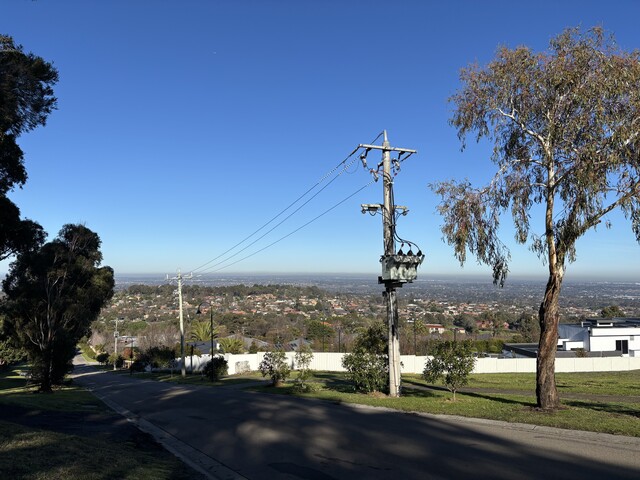In something of a paradox, touring a cemetery can really bring history to life.
More than 30 tales of early settlers in the South East will be revealed in a historical tour at Dandenong Community Cemetery this month.
Tour guides Lyne McGregor and Jane Rivett-Carnac, from the Narre Warren & District Family History Group, are conducting their 15th tour of the region’s historic graveyards.
As they sit down next to the dead, they pat the gravestones out of respect.
“When you are researching, you get very attached to the people,” Rivett-Carnac says.
She pulls out an apt quote that going to a cemetery is like going to a library, with each grave a book.
“Every one of these people here have a story.”
She talks about the myriad of “rabbit holes” that the pair have explored.
They found the story of a heroic woman who reached into a housefire to save a boy but who succumbed to her injuries.
And the 16-year-old house-keeper found dead in a burnt-out dwelling, with unexplained injuries to her body.
The newspapers of the time told of a community petitioning for an inquest, their suspicions aimed at the girl’s employer.
Ultimately the case “fizzled out” unsolved.
McGregor and Rivett-Carnac didn’t just delve behind the weathered monuments and gravestones in the four-hectare cemetery.
They tell of the magnificent avenue of gnarled sugar gums that were believed to be planted at the site’s inception in 1857.
And also through their intrepid research, they unearth the tales behind the many unmarked graves – the great voids of earth between the headstones.
In an unmarked plot under a gum tree, there lies Edward Sangal whose body was found at a bottom of a well in the Lyndhurst district in 1902.
Sangal’s wife and her boyfriend were later convicted for his murder.
The wife was on death row when her sentence was commuted to life in prison; her lover – a worker on the Sangal’s farm – was executed.
With the Harkaway-born wife indisposed, there was no one to organise a headstone for the late Sangal.
“It would have been a huge scandal at the time,” McGregor says.
“You wouldn’t expect a wife to do in the man with her boyfriend.”
In another empty patch of grass lie the seemingly cursed couple Robert and Sarah Auhl.
While living in Euroa, three of their children die within 10 days from diptheria. He soon loses his business, and then their fourth child dies as a new-born.
They move to the Dandenong Ranges’ town of Cockatoo, where their house burns down.
“How could they keep going after that?” Rivett-Carnac mused. “But they did. They stayed in Cockatoo and just kept going.”
The cemetery bug started for the two historians in 2011.
They have since researched the 500 World War I soldiers buried in Berwick, Pakenham, Harkaway, Bunyip, Lang Lang and Cranbourne.
“We’ve got a good understanding of the types of people in these communities. You tend to get people with the same religion in the same area,” Rivett-Carnac says.
At Cranbourne, there are a lot of Protestant Scots buried, Pakenham has Irish Catholics, and at Dandenong there’s many Church of England and Protestant burials.
The Dandenong cemetery opened in 1857, around the same time as others in Cranbourne and Berwick.
Interred in this yard are families across what was the vast West Gippsland farming district, including Koo-wee-rup, Skye, Keysborough, Longwarry and Narre Warren.
Some of the notable family names of Casey-Cardinia include Frawley, Hanley, Harbrow, Sime and Weist. “The people who were the foundation of those communities,” Rivett-Carnac says.
At a pair of monuments, McGregor tells of Mary Sime – whose husband and daughter died a week apart in 1889.
“She never missed putting in a memorial notice in the newspaper for them. She did it every year up to the day she died (in 1913).”
Mary was ultimately buried by their side. The family had owned 880 acres in Bangholme – now the site of Bunurong Memorial Park cemetery, McGregor adds.
The guides tell of other hard-worn lives, World War I and II soldiers. They also dug into the women, often unheralded, who raised children and took over the farms when their husbands died.
“While the men get all the notoriety, the women would get just one little line in the local paper,” Rivett Carnac says.
Much of their research was found in old newspapers such as the Dandenong Journal and Pakenham Gazette.
There were a wealth of obituaries – not just for civic leaders but for many in what were smaller, more connected towns.
Rivett-Carnac laments that this research will be harder in future due to the dearth of death notices in newspapers these days.
The Dandenong Community Cemetery Walk is held by Narre Warren & District Family History Group on Sunday, 29 October, 10am at Kirkham Road, Dandenong; $10 adults. Light refreshments included at the end of the 90-minute walk. A book of the walk is available on the day.
Bookings: cemeterytours@nwfhg.org.au or treasurer@nwfhg.org.au

